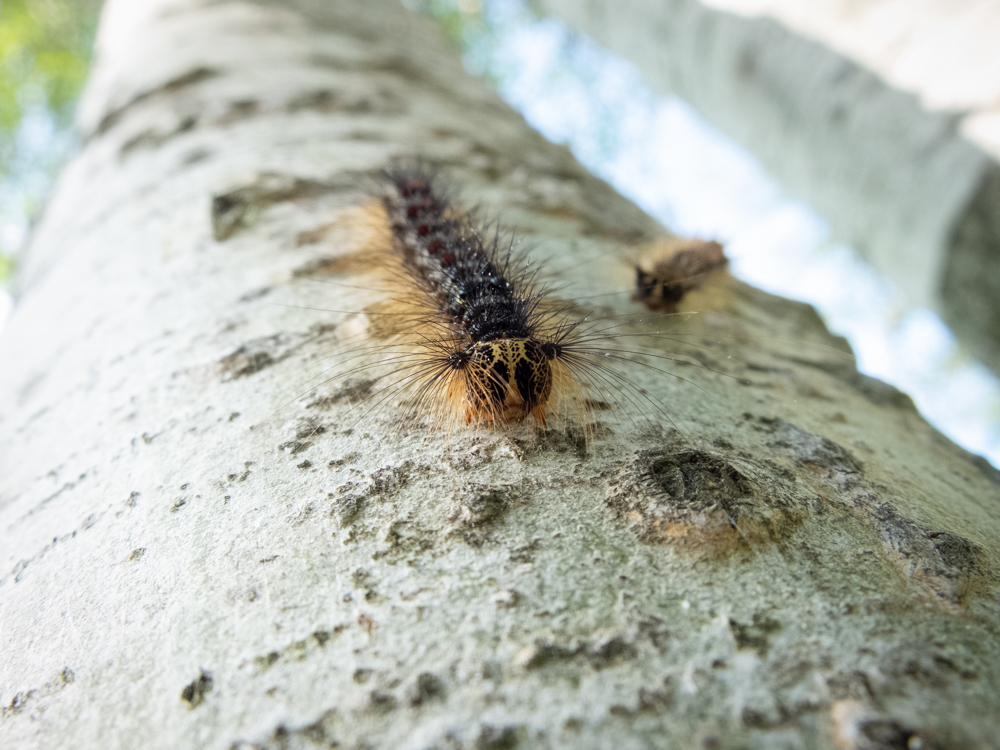WELLINGTON COUNTY – Carpeting the bark of trees on Jeff Stubbs’ property, voracious European gypsy moth caterpillars are making quick work of nibbling away poplar leaves, leaving the Erin resident worried about whether his trees will be able to take the abuse.
Standing in the quiet and watching the caterpillars worm their way onto a sticky trap of red tape wrapped around a tree’s trunk, the chorus of a green, leafy feast can be heard overhead.
“I feel like you can hear them,” Stubb said as he plucked individual caterpillars from a trunk, securing their gooey fate between his fingers.
Native to Europe, the invasive caterpillar was first detected in the province in 1969 with the first significant defoliation occurrence in 1981.
Entomology technician David Dutkiewicz with the Invasive Species Centre in Sault Ste. Marie says populations have spiked across the province this year and are “defoliating trees like crazy.”
Populations are increasingly out of control and in a rare move the pests are even beginning to feed on coniferous tree species.
The Ministry of Natural Resources and Forestry tracks defoliation across the province.
Last year, the ministry recorded over 570,000 hectares of defoliated trees compared with 42,000 hectares in 2019. They’ll soon be gearing up for this year’s survey.
Most residents throughout the county are on their own when it comes to managing the invasion, using burlap to trap the caterpillars or sticky tape to impede their mission.
Spraying the microbial pesticide Btk (bacillus thuringiensis kurstaki) onto leaves seems the only solution for getting an early handle on aggressive populations.
When young caterpillars emerge in May, they feed on treated leaves and Btk breaks down, rupturing the caterpillar’s stomach.
But the pesticide has been criticized because it doesn’t only target gypsy moth caterpillars.
Dutkiewicz says it’s important to only use Btk in May, before native species like monarchs emerge.
“I usually tell people that if you’re spraying after June 1, then you’re already too late and you’re also at risk of harming other caterpillars,” he said.
As for public property most Wellington municipalities don’t have the resources for spraying and are instead keeping an eye on particularly bad areas.
The issue has become such a problem in Erin, Mayor Allan Alls brought a motion before county council in May calling on staff to investigate “the safety, practicality and costs” of aerial spray prior to next year’s infestation.
The good news is there are some natural predators to tackle overabundant populations, according to Dutkiewicz.
Mice and birds will eat caterpillar pupa and parasitoid wasps and flies will inject their eggs into caterpillar egg masses, parasitizing up to 30 per cent of the egg masses annually.
Trees are also able to produce a second “flush” of leaves in a season and can tolerate multiple years of defoliation, though it stresses the trees, making them susceptible to other ills.
As for what to expect next year, Dutkiewicz said defoliation surveys need to first be completed before any forecasts can be made.




